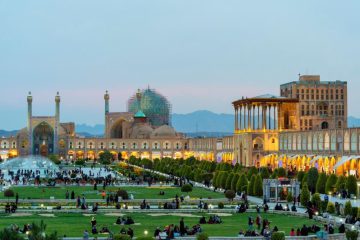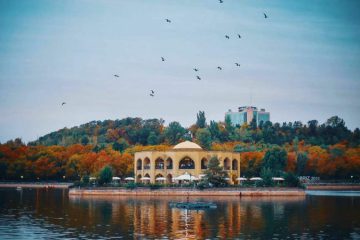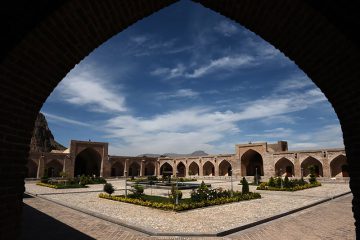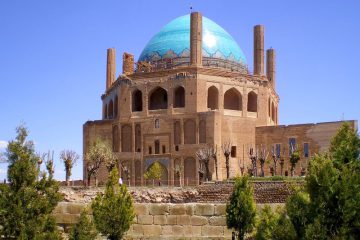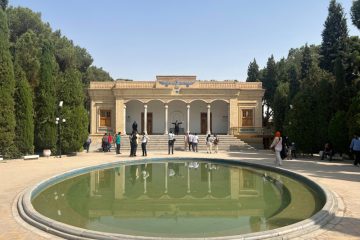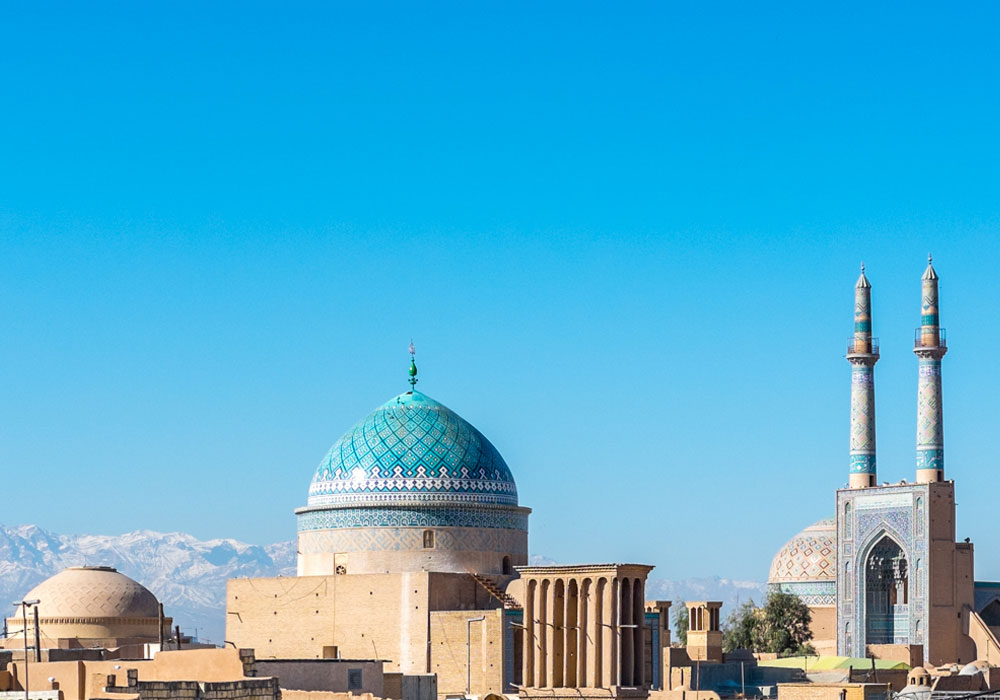
Yazd: BRIDE OF THE DESERT
The Yazd province has an area of 74493 sk.km and a population of 1.138 million. It is located in the center of Iran and is surrounded by the following provinces, Esfahan and South Khorasan in the north, Esfahan in the west, Fars and Kerman to the south, Kerman and South khorasan in the east. The west and southwest of the province are surrounded by the central mountain range of Iran. In contrast, other areas are desert and semi-desert. The highest point, is Shirkooh which is 4075m high. During the time of Sasanid era (6th century AD), this land was called Yasht and its capital was Gabay, but otherwise called Yasn and Kase. Today’s name of Yazd is derived from Yasht and Yasn. Yazd is known as the driest province in Iran. The hottest months are July and August although rarely exceeding 40 degree and January, the coldest month, can occasionally be colder than – 5 degrees. Yazd is located in the central part of Iran’s plateau neighboring Isfahan, Shiraz, South Khorasan and Kerman. It’s name is taken from the term that means God (Yazdan), and is a land known for its sanctity.
Having a relatively fertile land and being on the path of caravans made Yazd a perfect location for a city. However, the scarcity of water was a constant concern. As the main source of life, accessing and reserving water has always been an issue. Humans, up until the rise of modernity, depended on the primitive utilization of nature in order to meet viral needs. Given many challenges, Yazd residents managed to use natural resources wisely without causing any damages. Qanat or Kariz is the solution of desert dwellers in dealing with the water challenge. The underground water channels moved water from the foothills to the plains to be used for different purposes. The qanat design is a sign of intellect and wisdom of people over the capacity of their surrounding environment. Another sing of wisdom is using the most abundant element of nature in the area, soil, for different purposes such as shelter and safety.
Tailoring the condition of their living environment enabled creative desert dwellers to begin a new age of innovation by creating wind catchers, Sabat, and central courtyard. The bricked wind catchers of these introverted and passing it through the halls and basements. The roofed streets that were named Sabat or Tagh provided the passers-by with a much needed shelter from the hot summer’s sun.
The restriction the natural conditions of the place forced upon people does not end with influence on the architecture, it also has impacted the lifestyle and social affairs. Lack of water and its effect on agriculture, brought forth the necessity of other means or sources of income like trades and domestic products. In most houses and workshops in Yazd, clay is used for pottery, weaving related products are made, and different forms of textile like Termeh, Zari, Daraie and Ahrami are woven in addition to Qali (carpet) and Zilu.
Yazd Daily Tours
Amir Chakhmaq Complex
Yazd’s architectural centerpiece, the Amir Chakhmaq complex is located in the heart of the city, in a square of the same name. The imposing three-storey façade flaunts a number of beautifully symmetrical Ivans, which light up and glow after sunset. It is one of the largest hosseiniehs in the country (buildings used in the commemorative ceremonies for Imam Hossein’s death), and dates back to the 15th century, although it has undergone numerous renovations. The outstanding three-storey facade of this Hosseinieh is one of the largest such structures in Iran. The rows of perfectly proportioned sunken alcoves are at their best and most photogenic in
late afternoon, when the copper-colored sunlight is captured within each alcove and the towering exterior appears to glow against the darkening sky. New two-storey arcades hem the pedestrianized square and illuminated fountains lend an attractive foreground to the splendid vista at night. Only the 1st floor of the structure is accessible. A huge wooden palm nakhl (cypress tree-shaped wooden structure) is parked under the Amir Chakhmaq. An important centerpiece for the observance of Shiite Ashura commemorations, this nakhl is over 200 years old and is no longer moved. During Ashura, it is draped in a black cover for a day or two around the celebrations to represent the coffin of Imam Hossein. Illusions to cypress trees, and by association the nakhl (which in fact means date palm), predate Islam and signify immortality, resistance and freedom – qualities that have come also to be associated with the Shiite imam, Imam Hossein.
Zoroastrian Atashkadeh
Zoroastrian, an ancient monotheistic religion in Iran before that dates back to around 3500 years ago, was the principal religion in Iran before the Islamic victories, and the community still lives in some specific parts of the country. Yazd is the center of Zoroastrianism in Iran, and is home to several sites of religious and historic interest. The Ateshkaadeh or fire temple, this elegant neoclassical building, reflected in an oval pool in the garden courtyard is the most prominent, consisting of a flame visible through a window from the entrance hall that has allegedly been burning since the 5th century A.D.
Chak Chak
In the heart of the desert, almost 70 KM far from Yazd, is Iran’s most prominent Zoroastrian pilgrimage site, Chak Chak. A tiny cliff-side village, according to myth the rock face opened up and offered refuge to Nikbanu, the daughter of the last pre-Islamic ruler, from the encroaching Arab infringers. Each year in June thousands of Zoroastrians from Iran, India and other countries flock to the fire temple of Pir’e Sabz. Tradition has the opinion that Pilgrims are to stop the moment they see the the sight of the temple and keep their journey on foot the rest of the way. The temple of Chak Chak, which is the Persian for ‘drip drip’, consists of an ever-dripping spring, said to be the mountain weeping in the remembrance of princess Nikbanu. Growing beside the saintly spring is an enormous and ancient tree said to be Nikbanou’s cane. Myth also has it that a petrified colorful cloth from Nikbanou could be seen in the rocks although pilgrims have since taken this.
Chak Chak Shrine
Jame Mosque
Ascending above the historical city, this marvelous construction is graced with a tiled entrance portal, flanked by two 48m-high minarets and adorned with inscriptions from the 15th century.The delicate mosaics on the dome and mihrab, and the tiles above the main Western entrance to the courtyard are masterpieces of calligraphy , evoking saintly names in immeasurably complicated patterns. Built for Sayyed Roknaddin in the 15th century, the mosque is constructed on 12th-century foundations over a former fire temple and with access to the Zarch Qanat (a stairwell leads to part of this ancient water channel but is closed to the public).The Jame Mosque is specifically remarkable for the prevalence of faience- a form of tiling that , like mosaic, is formed of various coloured pieces that are merged together to create the design. This is one site where having a guide (and ideally a rudimentary knowledge of Arabic script) can transform the experience of a visit as it is impossible to guess at the calligraphic conundrums involved in the design without specialized interpretation.
Towers of Silence
Another outstanding Zoroastrian site, the ominous-sounding Towers of Silence are situated just outside the city and surely worth a visit. Rising from a solemn desert landscape, these two circular, raised structures sit atop adjacent hills. In the Zoroastrian tradition, once a body stops to live, it can immediately be contaminated by demons and made impure. To avert this infiltration, Zoroastrians purified the dead corpse by exposing it to the elements and local fowl on top of flat-topped towers in the desert namely Dakhmas. According to a tradition dating back over 3,000 years, bodies were arranged on the towers three concentric circles. Men were located in the outer circle, women in the middle, and children in the inner-most ring. Dead Bodies were then left until their bones whitened by the elements and stripped by the vultures.
Dolat Abad Garden
Once a residence of Persian regent Karim Khan Zand, this small pavilion set UNESCO-listed gardens was constructed around 1750. The interior of the pavilion is superb, with intricate latticework and exquisite stained-glass windows. The pavilion also boasts Iran’s loftiest badgir; standing over 33m tall, it was rebuilt in the 1960s.The pretty garden, constructed on the traditional Persian garden principle of symmetrical design, is planted with soaring evergreens and dotted with sour orange and pomegranates. There’s a coffeshop on-site and some craft shops by the door. Note the unattractive but hygienic modern take on a water fountain: it dispenses disposable straws.
Bazaar of Shiraz is REALLY Historical!

